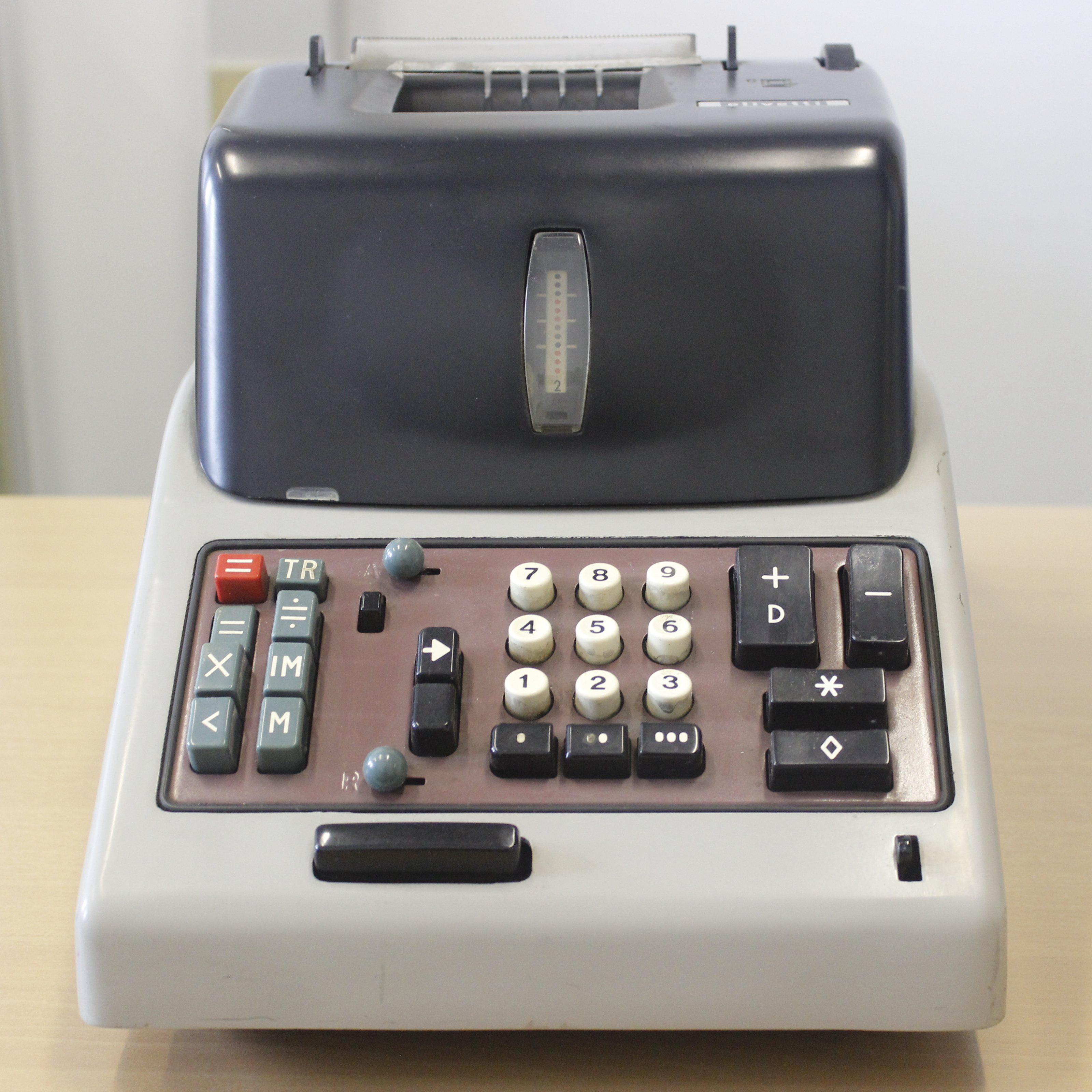
The Divisumma 24 is an electromechanical calculator that reflects the concepts of practicality and technological innovation. It was designed to quickly add, subtract, multiply and divide at 250 cycles per minute in sequence, with a 70 watt motor as a power source. Through its use a great variety of calculations can be made in a short time span and automatically. Each phase of a calculation and each result is printed by means of an inked ribbon in blue and red band on a roll of paper. In fact the mode of use is almost completely analogous to that of the current office calculators: possibility of performing the four operations, a single numeric keypad reduced to ten keys to set all the terms of the operation and print the results.
Insights - Fun facts
This machine has represented a great development within the economy and the market of electromechanical calculators. Despite the complicated mechanisms inside, it is a machine with which it is easy to interact. It is a simplified and less expensive version of the complete basic project, namely the Tetractys. Thanks to the good price-performance ratio, it was the most sold model by Olivetti (about 6 million units), guaranteeing a considerable diffusion of electronic calculators within the Italian market and international markets.
The Divisumma 24 calculator is part, together with the Elettrosumma 22, the Elettrosumma 24, the Multisumma 24 and the Tetractys, of a series of automatic electric calculators called MC-24. In particular, this series is equipped with a dynamic memory and integrated print register.
The Divisumma consists of a cast iron base, obtained by casting and milling, which gives rigidity to the structure and on which 4 sheet metal flanges are screwed, which act as a support to the main shaft and to the other shafts present. Instead the mechanisms and kinematic mechanisms are in iron and steel, and are mainly made up of levers and moved by cams in synthesized material, whose sliding area is tempered. The assembly was mostly done with screws.
In addition, the Divisumma 24 is equipped with a keyboard reduced to multiple zeros and print of each step of the calculation on a roll of paper through an inked ribbon with a blue and red band. The printing speed, that is the complete rotation of 360 degrees of the main shaft, was brought to 250 accredited cycles per minute and this made it possible to carry out a greater quantity of calculations and in a more rapid manner. The serial number (serial number) of the machine was manually engraved with a pantograph on the lower side of the base.
The motion is entrusted to a 70 Watt electric motor whose worm screw pinion drives a crown gear in bakelite cloth equipped with clutch, keyed on the main shaft (10 mm diameter), as long as the whole width of the machine, supported from 4 bronze bushes; on this, through pairs of tempered screws placed at 90 degrees, a mordant and a piercing, the various multi-profile cams in sintered material are fixed, in turn actuating the countless levers. The only bearings are the crankshaft support torque. Lubrication for life is entrusted to 4 types of lubricants, each optimized for the kind of friction generated in the specific point: thick oil, low viscosity grease, infusible grease and molybote molybdenum disulfide grease. For the movement of the CR carriage, the opposite side of the drive shaft is exploited, on which a second pinion is located which drives a frictioned toothed wheel coaxial with the tabulator drum. The programming of the carriage tabulation distances is made by inserting appropriate metal stops in the slots obtained.
In 1957 the Divisumma 24 was sold at the price of 325,000 lire. It therefore represented an important investment for a company, considering that the average salary of an employee was around 60000 Lire, and that the cost of a FIAT 500 car was 465.000 Lire.
Technical Data Sheet
Name: Olivetti Divisumma 24
Category: Electromechanical calculator
Designer: Marcello Nizzoli (case) and Natale Capellaro (mechanics)
Manufacturer: Olivetti
Country of production: Italy
Year of production: Produced from 1956 until 1964
Dimensions: 260x 235×415 mm;
Weight: 15,6 kg